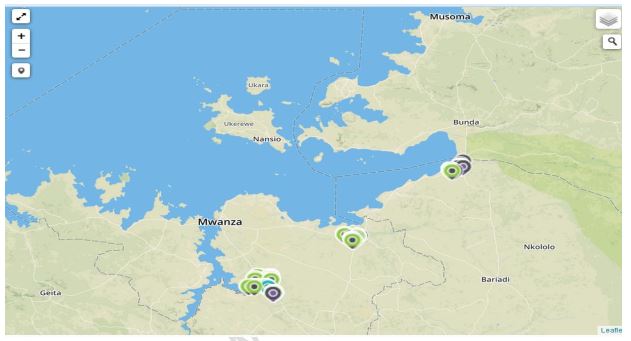COMMUNITY PERCEPTION ON QUANTITY, QUALITY AND REASONS FOR TREATING DRINKING WATER IN SATELLITE TOWNS OF MWANZA CITY
Abstract
The aim of this study was to assess the perception of Community on the quantity, quality and reasons for treating drinking water in three Satellite Towns of Mwanza City in Tanzania, namely Misungwi, Magu and Lamadi. A cross sectional study design was employed in carrying out this study where a sample size of 417 respondents was choosen. Study results indicated that the average quantity of water collected per day was higher in Lamadi (177 litres) than in Misungwi (167 litres) and Magu (162 litres). Consequently, households in Lamadi used more water than their counterparts in Misungwi and Magu. Water use per capita per day was about 26 litres, 25 litres and 25 litres in Misungwi, Magu and Lamadi, respectively. This means that the quantity of water used in the study towns meets the minimum threshold of 25 litres per capita per day as recommended by the Tanzania national water policy. Drinking water from the main sources was not properly treated. Perception of respondents with regard to quality of drinking water in all towns indicated that water was ‘clean’: 53%, 60%, and 60% in Misungwi, Magu and Lamadi, respectively. However, about one third of respondents in Magu (32%) and Lamadi (32%) reported that water had ‘some particles’. This could mean that the quality of drinking water in these towns was not assured. Regarding treatment of water at household level, respondents in Lamadi reported that they treat their drinking water before consumption (80%) compared to 68% in Magu. However, in Misungwi, 78% of the households did not treat their drinking water. Most of the respondents in Misungwi (40%) and Magu (38%) used pails or buckets to store their drinking water. About 32% in Misungwi and 26% in Magu used clay pots. Drums were the main water storage facility in Lamadi (41%). This study also revealed that about 53% of respondents in Lamadi and 31% in Magu used clean utensils to draw water from storage containers ready for drinking. Cups were mostly used in Misungwi (44%) and Magu (55%), however less used in Lamadi (28%). Conversely, it was reported that ‘dipping hands into the water container’ was practiced by 25% of the respondents in Misungwi, 22% in Magu and 20% in Lamadi. This practice could be a significant cause of drinking water contamination, which contributes to water related diseases. It is recommended that the authorities responsible with provision of water to the study towns give high priority to the quality of drinking water by constructing treatment facilities to reduce health risks associated with drinking water.
Downloads
References
DFID, (2011). Access to safe water: Approaches for Nanotechnology Benefits to reach the bottom of the pyramid. Final Technical Report, Development Alternatives Group, New Delhi.
Grey, D. (2006). Water for Growth and Development: A theme Document of the 4th World Water Forum.
Kothari, C.R. (2009). Research Methodology: Methods and Techniques. Second Revised Edition. New Delhi: New Age International Publishers.
Mwambuli, S. (2011) Sustainability crisis in Rural Water Supply: Water Aid
URT (2002). National Water Policy: Ministry of Water and Livestock Development. Government Printer, Dar es Salaam, Tanzania. 46pp.
URT (2009a). Water Resource Management Act. Government printer, Dar es Salaam.
URT (2009b). Water Supply and Sanitation Act. Government printer, Dar es Salaam.
URT (2010). The National Strategy for Growth and Reduction of Poverty II. Government printer, Dar es Salaam.
URT (2015). Basic Demographic and Socio-Economic Profile Statistical Tables: Tanzania Mainland. Dar es Salaam: National Bureau of Statistics.
WHO (2011). Guidelines for Drinking- Water Quality.
UNICEF and WHO (2012a ). Drinking Water Equity, Safety and Sustainability. United States of America.
WHO and UNICEF (2012 b). Joint Monitoring Programme for Water Supply and Sanitation, Progress on Drinking water and sanitation. 2012 Update, USA.















